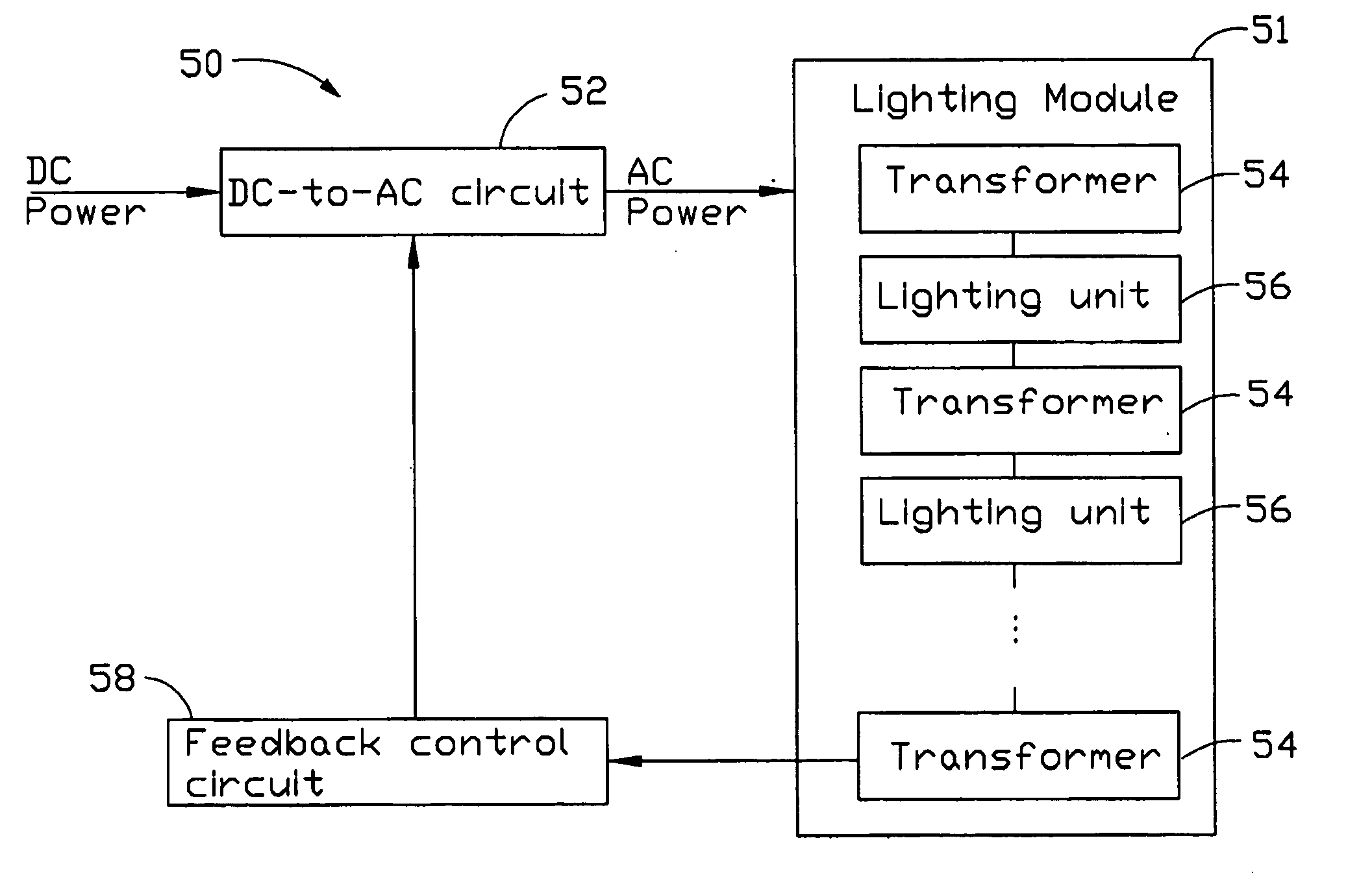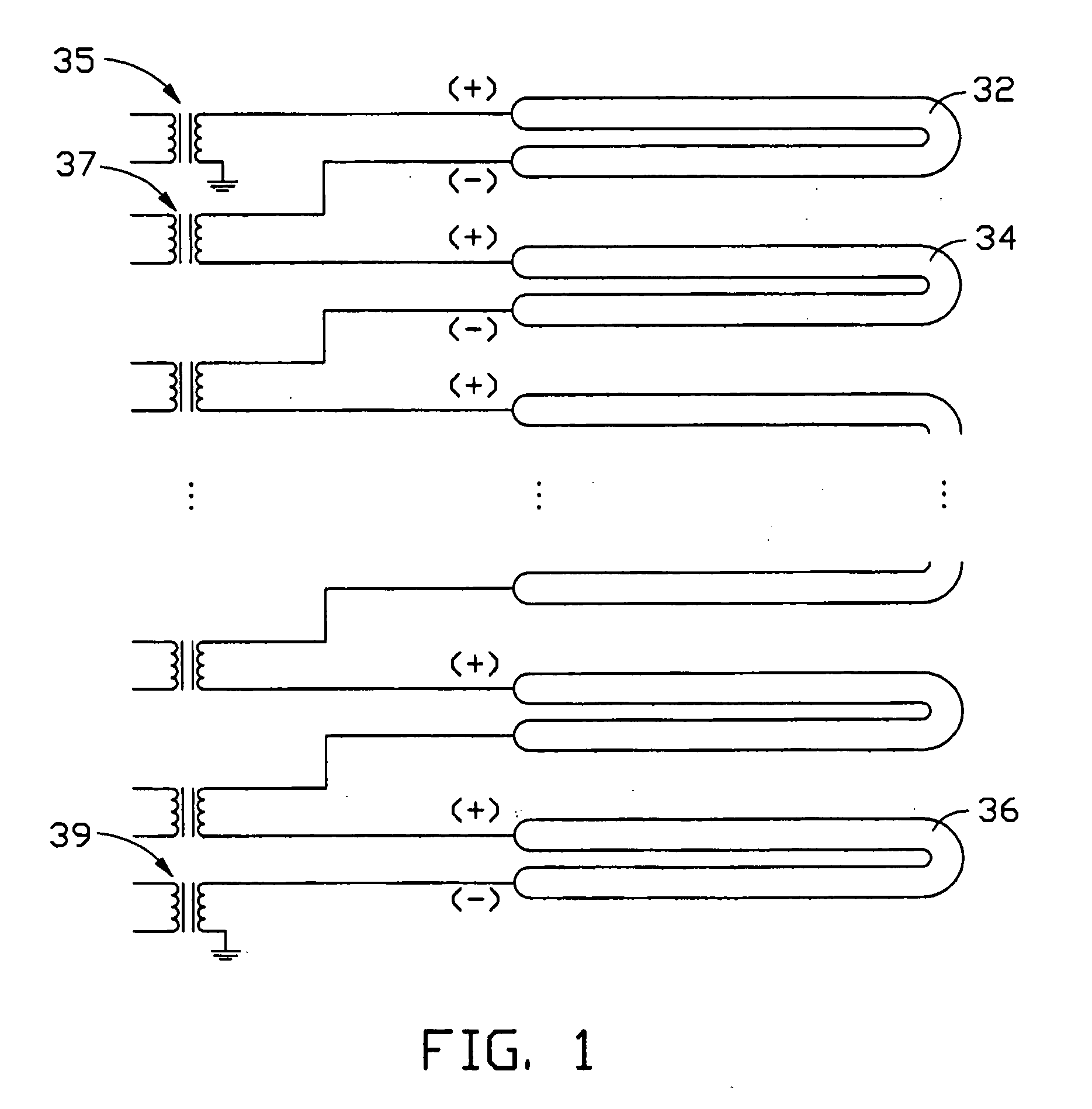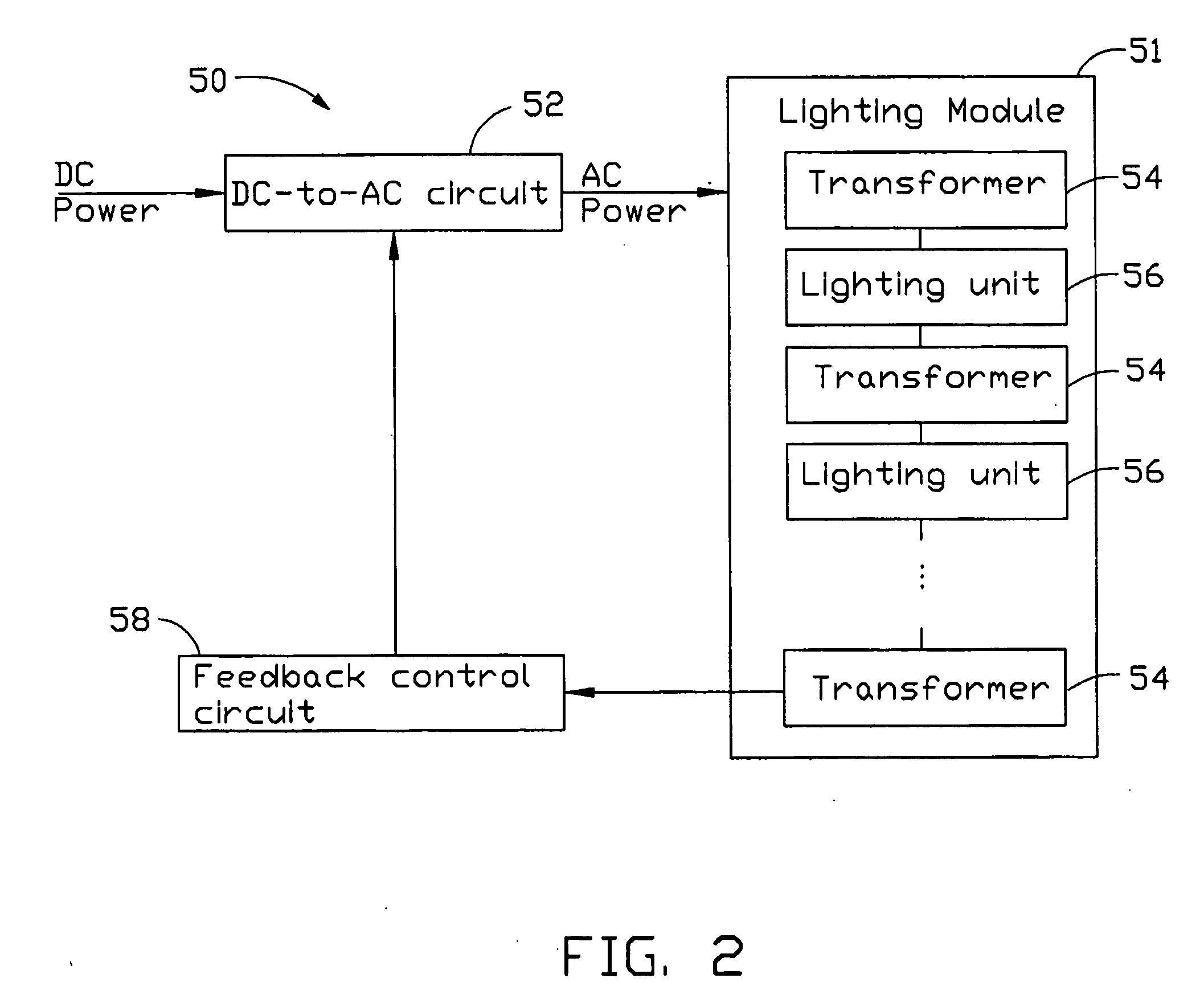Lighting apparatus formed by serially-Driven lighting units
a technology of lighting units and lighting devices, which is applied in the direction of instruments, light sources, optics, etc., can solve the problems of increasing production costs, large contributors to the cost and power consumption of lcd devices by backlight sources, and inability to achieve light-emission independently, so as to reduce the number of transformers and reduce the size of associated lcds , the effect of low cass
- Summary
- Abstract
- Description
- Claims
- Application Information
AI Technical Summary
Benefits of technology
Problems solved by technology
Method used
Image
Examples
first embodiment
[0021]FIG. 1 illustrates a part of a lighting apparatus according to the present invention. Said part of the lighting apparatus comprises N lighting units 32, 34, . . . , 36, as well as N+1 transformers 35, 37, . . . , 39 (N being an integer greater than 1). Each of the transformers 35, 37, . . . , 39 has two ports: one input port and one output port. Each port has two ends to input or output voltage signals. When the input port receives low voltage AC power, the output port will transform the received low voltage AC power into high voltage AC power. The lighting units 32, 34, . . . , 36 of the present invention can be implemented by various lighting elements, such as discharge lamps. The N lighting units 32, 34, . . . , 36 are serially connected by the N+1 transformers 35, 37, . . . , 39 so that a positive high-voltage end and a negative high-voltage end of each lighting unit 32, 34, . . . , 36 are respectively connected to the transformers 35, 37, . . . , 39. Each two contiguous o...
second embodiment
[0025]FIG. 3 illustrates a lighting apparatus 60 according to the present invention. The lighting apparatus 60 comprises N lighting units 62, 64, . . . , 66, N−1 current balance control circuits 70, and N+1 transformers 65, 67, . . . , 69 (N being an integer greater than 1). All the transformers 65, 67, . . . , 69 and lighting units 62, 64, . . . , 66 are similar to the transformers 35, 37, . . . , 39 and lighting units 32, 34, . . . , 36 described above in relation to FIG. 1, except that the transformers 65, 67, . . . , 69 are allocated differently. The N lighting units 62, 64, . . . , 66 are serially connected by the N−1 current balance control circuits 70, so that each of the N−1 current balance control circuits 70 has a connection with two corresponding of the lighting units 62, 64, . . . , 66. In addition, each current balance control circuit 70 is connected to a corresponding one of the transformers 65, 67, . . . , 69. For example, the negative high-voltage end of the initial ...
PUM
| Property | Measurement | Unit |
|---|---|---|
| output current | aaaaa | aaaaa |
| current | aaaaa | aaaaa |
| AC power | aaaaa | aaaaa |
Abstract
Description
Claims
Application Information
 Login to View More
Login to View More - R&D
- Intellectual Property
- Life Sciences
- Materials
- Tech Scout
- Unparalleled Data Quality
- Higher Quality Content
- 60% Fewer Hallucinations
Browse by: Latest US Patents, China's latest patents, Technical Efficacy Thesaurus, Application Domain, Technology Topic, Popular Technical Reports.
© 2025 PatSnap. All rights reserved.Legal|Privacy policy|Modern Slavery Act Transparency Statement|Sitemap|About US| Contact US: help@patsnap.com



